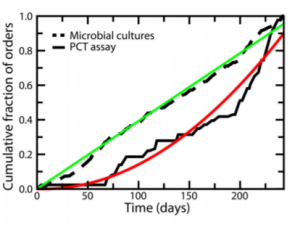Diffusion of Innovations in Physician Social Networks
Across the world, one of the most difficult industries to succeed in is healthcare. Burdened by constantly evolving regulations and a saturation of competitors, new pharmaceutical and biotechnology companies struggle to survive beyond their infant stages. They spend millions of dollars developing novel treatments and devices, only to see overall sales ultimately decline. Dr. Curtis Weiss and his colleagues at Northwestern University have proposed an explanation for this phenomenon. They believe that young healthcare companies place too much emphasis on trying to receive positive reviews from medical journals instead of actively encouraging physicians to adopt their products.
Since their inception, medical journals have been regarded as filters for new products and treatments. They seemingly vet an innovation from head-to-toe, testing efficacy, safety, and cost efficiency. While this is certainly true, Dr. Weiss and his team hypothesized that physicians are actually more likely to adopt a new treatment or device if a respected peer uses it rather than if a medical journal recommends it. Framing this from a networks perspective, Dr. Weiss and his team wanted to see if adoption of a medical innovation by a handful of physicians leads to a cascade of adoption by a larger collection of peer physicians.
To start, the researchers identified a well-reviewed innovation in multiple respected medical journals. This innovation, a novel high-impact serum assay for diagnosing bacterial infections, had already been on the market for about four months prior to the experiment. The researchers then introduced the assay to two physicians in a cohort of 36 and observed how the innovation spread over a 244-day period. By the end of the period, 20 of the 36 physicians had adopted the assay. This exponential increase outpaced the rate of adoption in the four months prior to the experiment. The red curve in the graph below highlights this exponential rate of adoption and contrasts it with the slower linear rate of adoption of an older method of diagnosing bacterial infections.
The results of this experiment really embody the idea of diffusion in networks. The first two physicians that were given the assay served as initial adopters. The peers of these original physicians were then able to directly observe how the assay worked and assess its compatibility with their individual practices. Reading about the assay in a medical journal would not have allowed the peer physicians to get this degree of exposure to the innovation. As a result, their thresholds for adoption were lowered dramatically, and the assay spread quickly to a large proportion of the cohort. It is important to note that not all of the physicians ultimately adopted. This very well could have been because of the existence of a dense cluster within the cohort that blocked the continued propagation of the adoption cascade. Regardless, it is clear that adoption thresholds are higher when physicians learn about a product through a medical journal and lower when they learn about it from their peers. Young biotechnology and pharmaceutical companies need to realize this fact and adjust their business models accordingly to thrive.
Sources:
https://journals.aps.org/prx/pdf/10.1103/PhysRevX.4.041008

